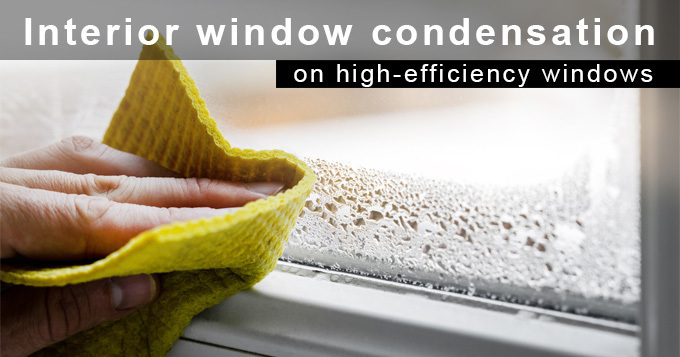 Updating. Please wait
Updating. Please wait
Why does condensation occur on new high-efficiency windows?
Interior window condensation occurs on high-efficiency windows because they are designed to be more airtight and energy-efficient. These windows are typically made with multiple panes of glass with insulating gas in between, a low-emissivity (Low-E) coating on the glass, and airtight seals around the frame.
When the indoor temperature is higher than the outdoor temperature, warm, moist air can come into contact with the cold surface of the window. The moisture in the air condenses into water droplets on the glass surface, creating visible condensation. This process is known as the dew point, which is the temperature at which the air becomes saturated with water vapor and starts to condense.
High-efficiency windows are more airtight, which means that they reduce the amount of warm, moist air that can escape from the home. This trapped moisture can then lead to interior window condensation if there is not enough ventilation or if the indoor humidity level is too high.
To prevent interior window condensation on high-efficiency windows, it's essential to maintain proper ventilation and indoor humidity levels. This can be done by using exhaust fans in bathrooms and kitchens, using a dehumidifier, and opening windows periodically to allow for fresh air circulation. Additionally, maintaining a consistent indoor temperature can help to reduce the potential for condensation to occur.
In summary, interior window condensation on high-efficiency windows can occur due to a variety of factors, including relative humidity, indoor sources of moisture, insufficient ventilation, temperature differences, and window coverings. Proper ventilation, indoor humidity control, and maintaining a consistent indoor temperature are essential for preventing interior window condensation.